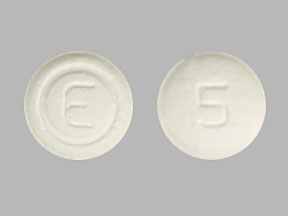
Ondansetron Coupons & Savings Card – Discount Prices from $6.60
Generic for: Zuplenz
My prescription
Edit
4MG, Ondansetron (20 Tablet Disintegratings)
Select pharmacy

CVS
$19.16
COUPON PRICE
Walmart
$6.60
COUPON PRICE
Walgreens
$12.20
COUPON PRICE
Albertsons
$18.89
COUPON PRICEOndansetron savings card
Show this card to your pharmacist
Walmart
$6.60
BIN
ID
PCN
GRP
019876
LHCD677D4F
CHIPPO
LHX
Powered by
Related serotonin antagonists prescriptions
More prescriptions for nausea
Related serotonin antagonists prescriptions
More prescriptions for nausea
Ondansetron Hcl +rfid (Ondansetron) dosage forms
Dosage Quantity Price from Per unit 4MG 20 Tablet Disintegratings $6.60 $0.33 4MG 1 Tablet Disintegrating $2.71 $2.71 4MG 2 Tablet Disintegratings $2.91 $1.46 4MG 3 Tablet Disintegratings $3.12 $1.04 4MG 4 Tablet Disintegratings $3.32 $0.83 4MG 5 Tablet Disintegratings $3.53 $0.71 4MG 6 Tablet Disintegratings $3.73 $0.62 4MG 8 Tablet Disintegratings $4.14 $0.52 4MG 9 Tablet Disintegratings $4.35 $0.48 4MG 10 Tablet Disintegratings $4.55 $0.46
| Dosage | Quantity | Price from | Per unit |
|---|---|---|---|
| 4MG | 20 Tablet Disintegratings | $6.60 | $0.33 |
| 4MG | 1 Tablet Disintegrating | $2.71 | $2.71 |
| 4MG | 2 Tablet Disintegratings | $2.91 | $1.46 |
| 4MG | 3 Tablet Disintegratings | $3.12 | $1.04 |
| 4MG | 4 Tablet Disintegratings | $3.32 | $0.83 |
| 4MG | 5 Tablet Disintegratings | $3.53 | $0.71 |
| 4MG | 6 Tablet Disintegratings | $3.73 | $0.62 |
| 4MG | 8 Tablet Disintegratings | $4.14 | $0.52 |
| 4MG | 9 Tablet Disintegratings | $4.35 | $0.48 |
| 4MG | 10 Tablet Disintegratings | $4.55 | $0.46 |
| 4MG | 12 Tablet Disintegratings | $4.96 | $0.41 |
| 4MG | 15 Tablet Disintegratings | $5.58 | $0.37 |
| 4MG | 30 Tablet Disintegratings | $8.66 | $0.29 |
| 4MG | 60 Tablet Disintegratings | $14.81 | $0.25 |
| 4MG | 500 Tablet Disintegratings | $55.00 | $0.11 |
| 8MG | 1 Tablet Disintegrating | $2.70 | $2.70 |
| 8MG | 2 Tablet Disintegratings | $2.89 | $1.45 |
| 8MG | 4 Tablet Disintegratings | $3.28 | $0.82 |
| 8MG | 5 Tablet Disintegratings | $3.48 | $0.70 |
| 8MG | 6 Tablet Disintegratings | $3.68 | $0.61 |
| 8MG | 10 Tablet Disintegratings | $4.46 | $0.45 |
| 8MG | 14 Tablet Disintegratings | $5.24 | $0.37 |
| 8MG | 15 Tablet Disintegratings | $5.44 | $0.36 |
| 8MG | 20 Tablet Disintegratings | $6.42 | $0.32 |
| 8MG | 30 Tablet Disintegratings | $8.38 | $0.28 |
| 8MG | 60 Tablet Disintegratings | $14.26 | $0.24 |
| 8MG | 500 Tablet Disintegratings | $63.00 | $0.13 |
| 16MG | 30 Tablet Disintegratings | $1176.44 | $39.22 |
Ondansetron Warnings
Ondansetron is a medication used to prevent nausea and vomiting, but it is important to be aware of potential risks, precautions, and special instructions for certain groups of people. This medication can interact with several other drugs. In particular, it should not be used with apomorphine, and your healthcare provider may need to change your medications if you are taking any of the following: bepridil, cisapride, dronedarone, fluconazole, ketoconazole, mesoridazine, nelfinavir, pimozide, piperaquine, posaconazole, saquinavir, sparfloxacin, terfenadine, thioridazine, or ziprasidone. There are also many other medications that may require dosage adjustments when used alongside ondansetron, including antidepressants, medications used for heart rhythm problems, certain antibiotics, and drugs that can increase serotonin levels.
One specific concern is the risk of serotonin syndrome, a potentially serious condition caused by too much serotonin in the body. The risk of serotonin syndrome increases if ondansetron is taken with other drugs that raise serotonin, such as SSRIs (like fluoxetine or paroxetine), SNRIs (such as duloxetine or venlafaxine), street drugs like MDMA, and supplements such as St. John’s wort. Signs of serotonin syndrome include confusion, fever, rapid heart rate, muscle stiffness, and agitation. If symptoms like these occur, seek medical attention immediately.
For pregnant individuals, those with a history of certain heart conditions, or people with liver problems, it is especially important to discuss all medical history and current medications with a healthcare provider before starting ondansetron. Ondansetron may not be suitable for everyone, and the benefits and risks should be carefully considered by your doctor.
If an overdose is suspected, symptoms can include sudden vision changes, severe dizziness, or fainting. Seek urgent medical care or call your local emergency services if you think too much ondansetron has been taken. Always inform your healthcare provider about any other medications or supplements you are using, including over-the-counter medicines and herbal products, to help prevent dangerous interactions.
Ondansetron Side Effects
Common side effects:
- Headache
- Tiredness
- Constipation
- Diarrhea
- Dizziness
- Lightheadedness
- Drowsiness
- Rash
- Itchy skin
Less common but important to monitor:
- Persistent headache
- Persistent constipation
- Persistent dizziness
Serious side effects:
- Chest pain
- Abnormal heartbeat (such as slow, fast, or irregular rhythm)
- Severe dizziness
- Fainting
- Serious allergic reactions (rash, hives, itching or swelling of the face, lips, tongue, or throat, difficulty breathing)
- Serotonin syndrome (fast or irregular heartbeat, hallucinations, loss of coordination, restlessness, severe nausea or vomiting, diarrhea, twitching muscles, unusual agitation, fever, or muscle stiffness)
Ondansetron Interactions
Interactions with high risk of serious adverse effects and should be avoided:
- Apomorphine
Interactions with moderate risk that may require dose adjustment, closer monitoring, or timing changes:
- Tramadol
- MDMA ("ecstasy")
- St. John's wort
- Fluoxetine
- Paroxetine
- Duloxetine
- Venlafaxine
